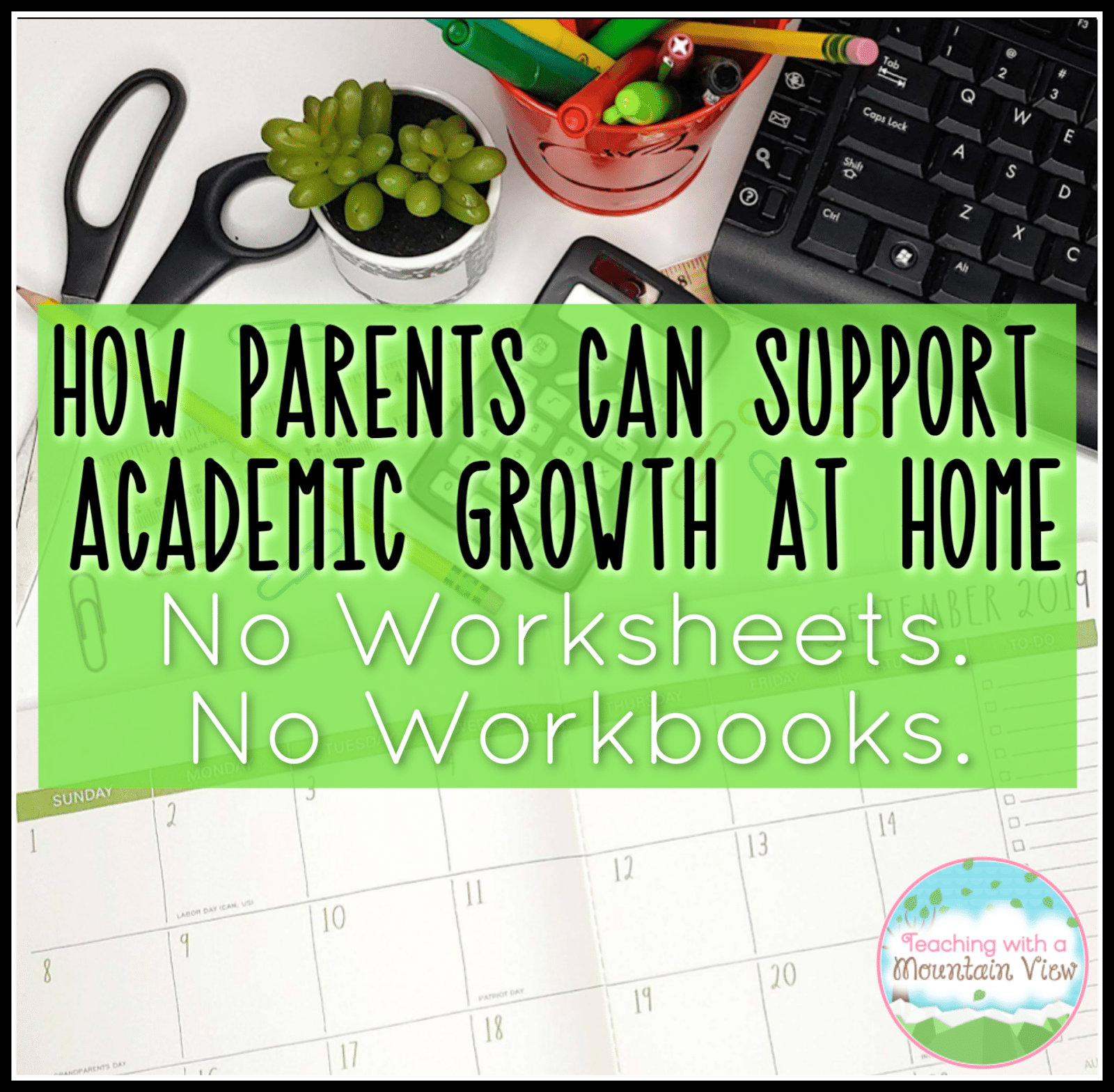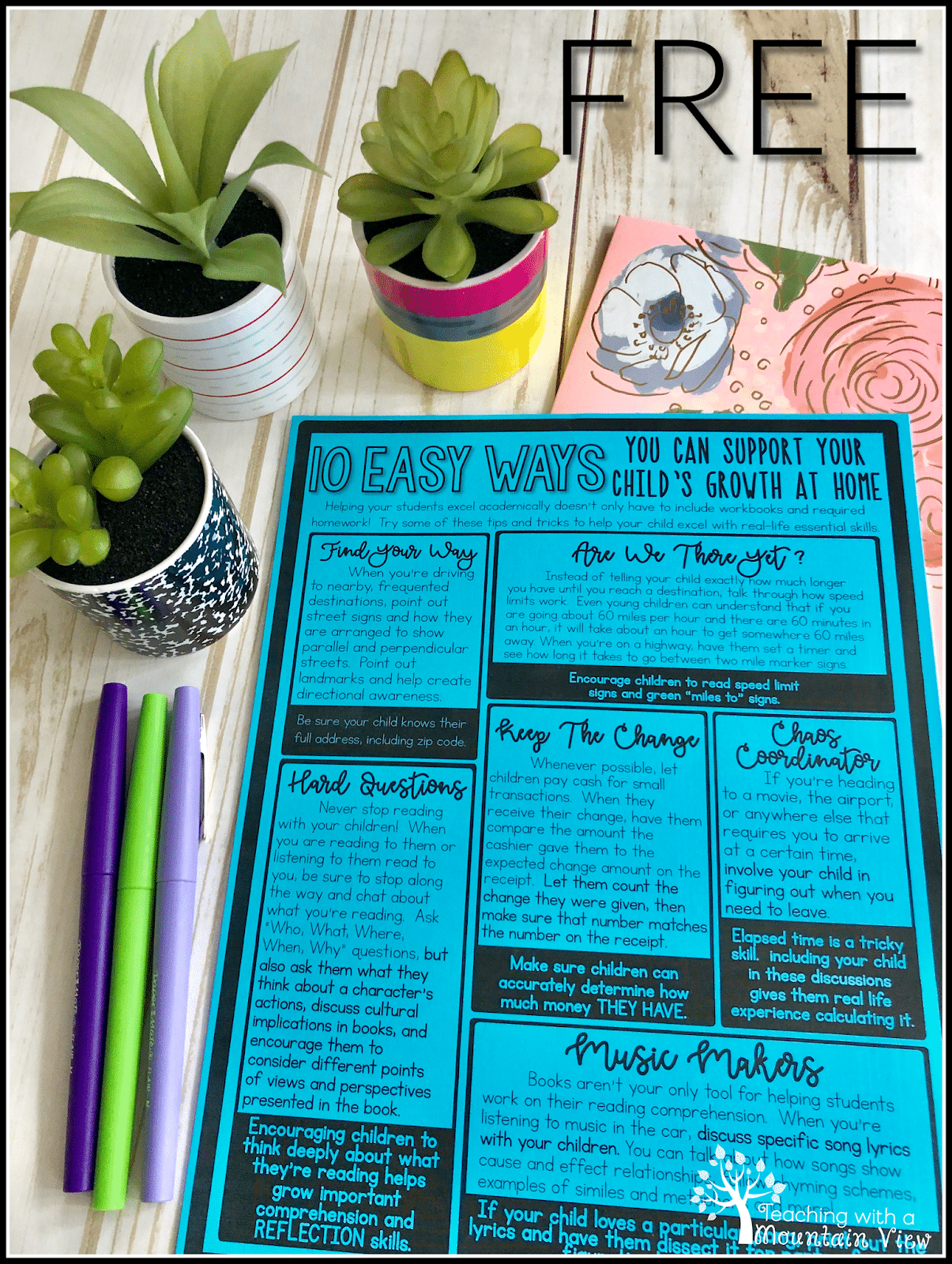Supporting Student Learning at Home
By Mary Montero
Share This Post:

At the beginning, middle, and end of every single school year, I always have parents ask me for tips about how they can support their child’s learning at home. Sometimes they are looking for worksheets or workbook recommendations. Oftentimes, they are much more interested in how learning can be integrated into their daily lives. Learning opportunities are literally EVERYWHERE. Sometimes it takes a minute to stop and realize just how many ways we can enrich students’ lives academically, even outside the classroom.
How Parents Can Support Student Learning at Home
With that in mind, I’ve compiled a simple list of ways that parents can support their children with learning at home. Keep these in your figurative back pocket during discussions with parents.
- Read aloud, read aloud, read aloud. As children grow older, many parents stop reading to their kids and listening to their kids read. If I had one tip for parents, it would be to read with their child every single night. They constantly need to hear examples of fluent reading just like they need to practice their own fluency. If they are younger, I always recommend You Read to Me, I’ll Read to You books. Otherwise, any book will do. If parents really want to work on comprehension skills with their students, I’ll send them home with these free question stems as they really promote discussion (Bonus: I use these in my class ALL year).
- Mental Math Car Ride Game Show. Okay, that sounds more fancy than it is. I always encourage parents to find numbers on the road and make a math game out of it. Speed limit is 65? What’s 6+5, 6-5, and 6 x 5? Did you just pass mile marker 165? What’s 16-5? What’s 1+6+5?
- Step competitions! Everyone in my family has a pedometer, and at the end of every day, we have a step competition. This silly evening routine singlehandedly taught my children how to read large numbers. We practice rounding up and rounding down, we compare numbers. You can even throw in more advanced math, like figuring out how many total steps the family took or the difference between the number of steps for certain family members. It’s such fun, and pedometers are fairly inexpensive these days!
- Story Time. Every night, my dear husband tells my girls a story that he makes up. I’m not nearly that creative after a long day, so when he’s out of town, my girls and I tell stories together. I start a little bit of the story, one of the kids continues it, and we “pass it around” until we have a complete, but sometimes pretty silly, story.
- Show me the Money. I remind parents that there are so many opportunities to teach not only financial literacy but basic math skills. You can round numbers to the nearest dollar, determine exactly how many more cents until you reach the next whole dollar, check if the cashier gave you the correct amount of money, etc.
- Time challenge. Not only do I encourage parents to discuss real-world elapsed time problems with their children, I emphasize how important it is for them to hear other time vocabulary such as “half past” “quarter to” etc. Instead of telling them it’s 9:15 when they ask, I tell parents to say, “It’s a quarter past the hour that comes after 8.” I mean, that one is pretty complicated, but you get the gist! 🙂
- Get cooking. It sounds so simple, but cooking with kids provides many opportunities for enrichment. From reading recipes, navigating websites or search engines to find the recipes, to doubling or halving recipes, my own children have learned so much from our time cooking together. Bonus: Be sure to let students read (and smell) all the spice labels!
- Write me a Letter. I always have questions about spelling! My best tip for supporting spelling at home (aside from studying spelling words) is to write letters back and forth to one another. When mom or dad or aunt or uncle or BFF writes the letter to the child, they write 5-10 words at the bottom that the return letter MUST include, spelled correctly. Kids love trying to figure out where to put the words in, and they get great writing and spelling practice!
- Map It Out! Social studies skills are harder to hit in every day life (go to museums, of course!), but making maps and learning their neighborhood is so important. I always have my students create a map of their street and surrounding areas. It’s always very eye-opening for them.
- Pay attention to prefixes and suffixes. We use them all day long, but sometimes it’s hard to remember to point them out to kids. Going to a POSTgame party? Talk to kids about what a PREgame party would be.
- Let’s Talk About Our Day. When my twins were little, I read that helping children recall small moments of their day is one of the very best ways you can improve a child’s working memory. After that, I made it a point to always talk about their day with them. My two year old LOVES to do this every night. I love hearing about the little tiny things she remembers about her day (Oh, those black dots on the lady bug were so cute, mama!). My big kids still love this, too. Even say they have better dreams when they talk about all the fun we had that day.
Of course, that’s not an all-inclusive list, but it will be a good start and get those creative juiced flowing for learning at home! I like to have something tangible to hand students as reminds, so I have also written out some specific tips parents have always found helpful. I would highly recommend sending this FREE page of suggestions home early in the year. Perhaps on Meet the Teacher night or during Back to School Open Houses!
Just fill out the form below to grab your free page of tips and tricks!
Mary Montero
I’m so glad you are here. I’m a current gifted and talented teacher in a small town in Colorado, and I’ve been in education since 2009. My passion (other than my family and cookies) is for making teachers’ lives easier and classrooms more engaging.













